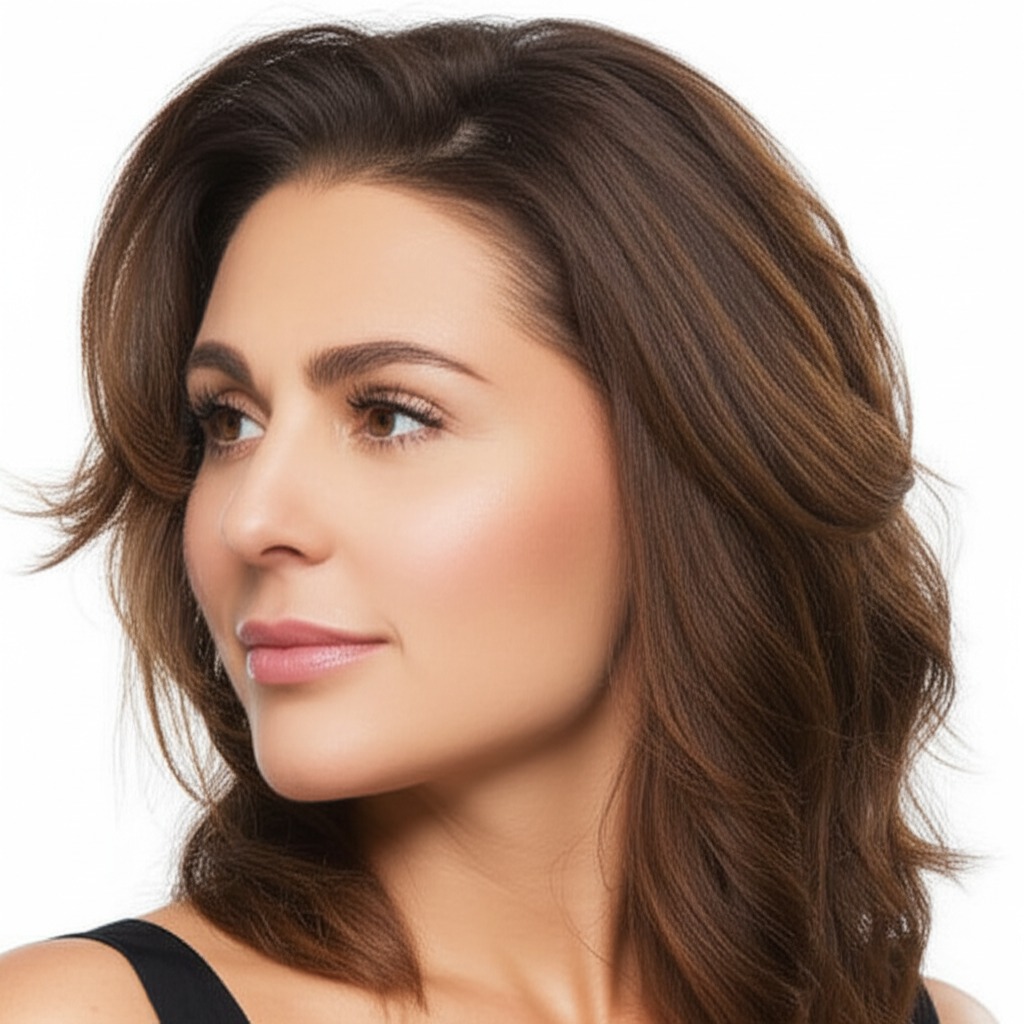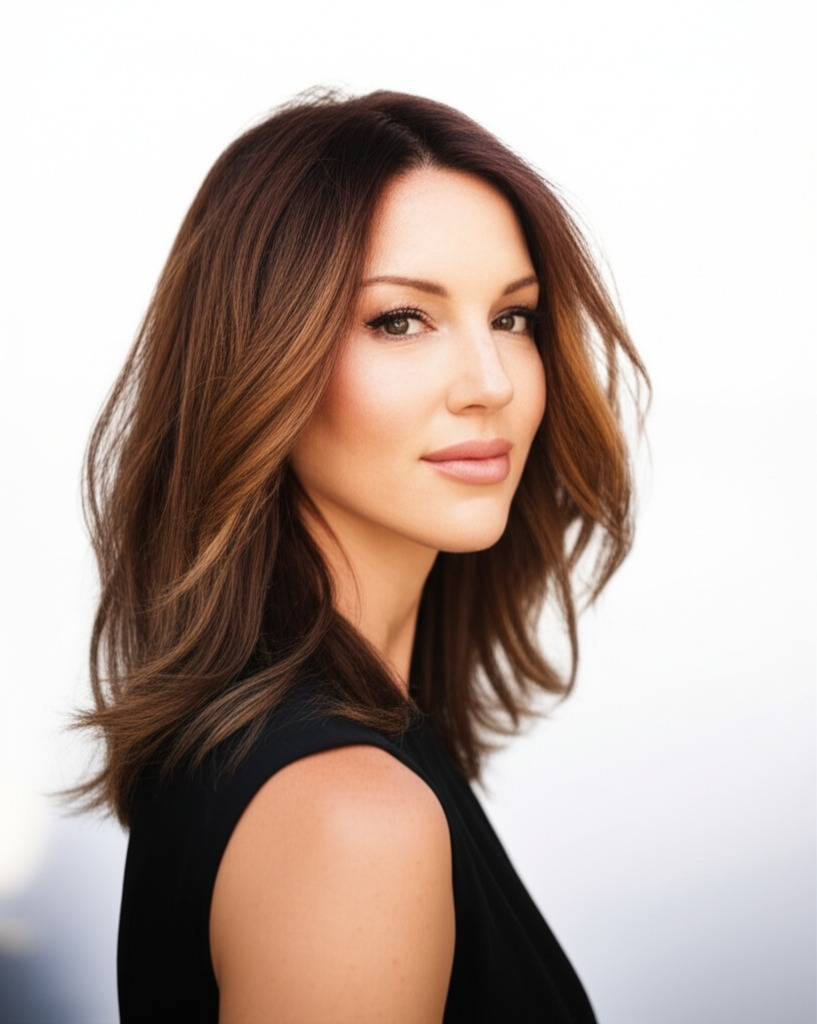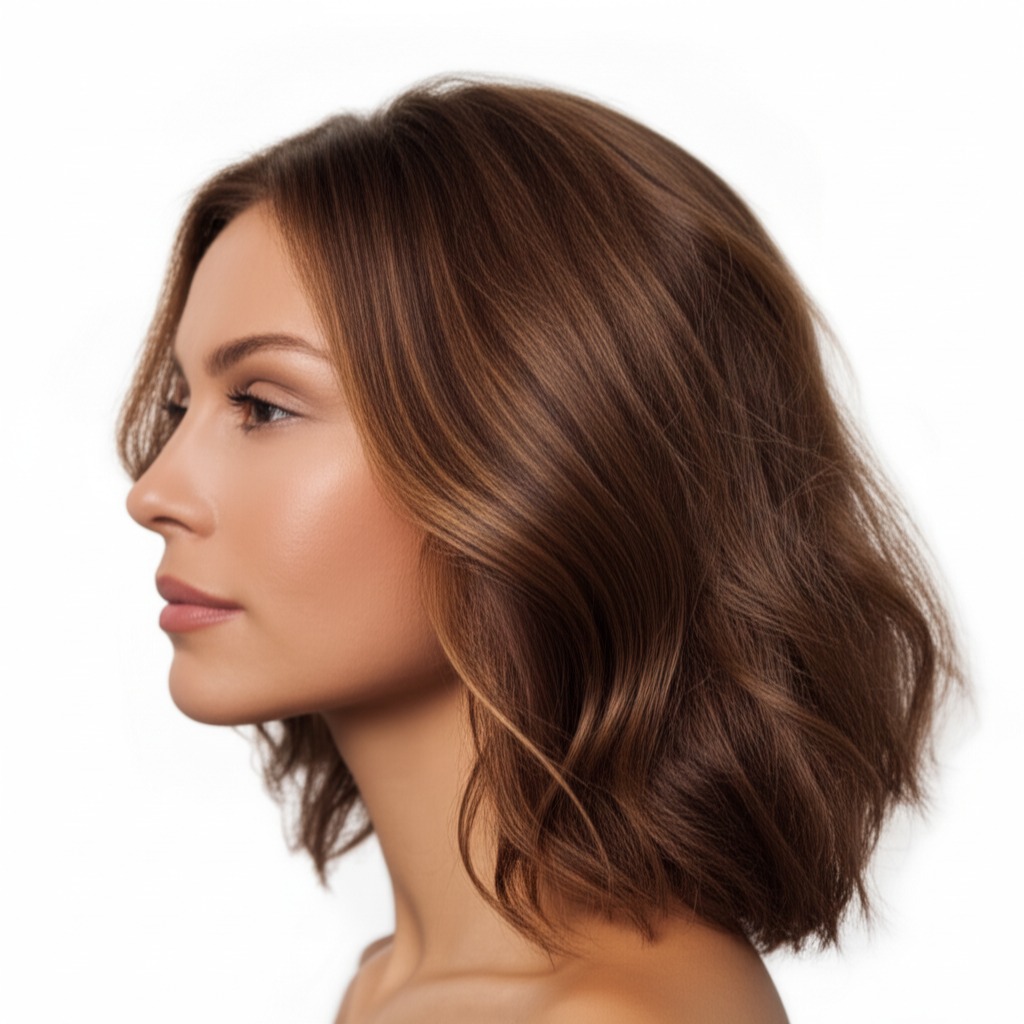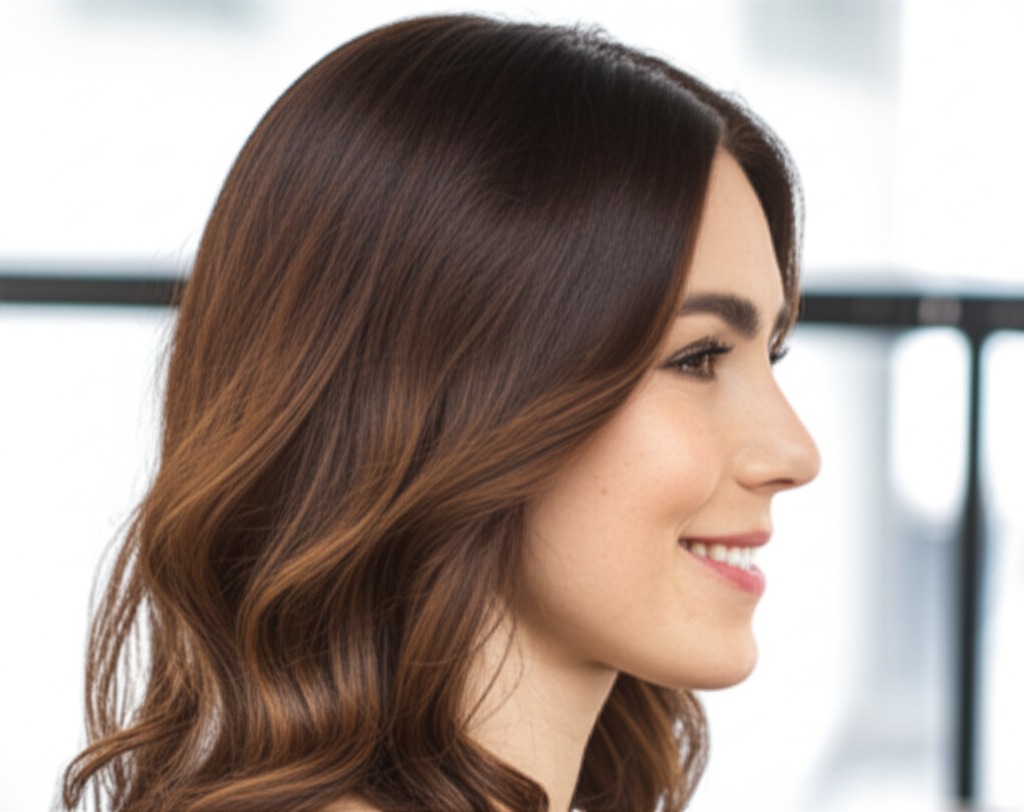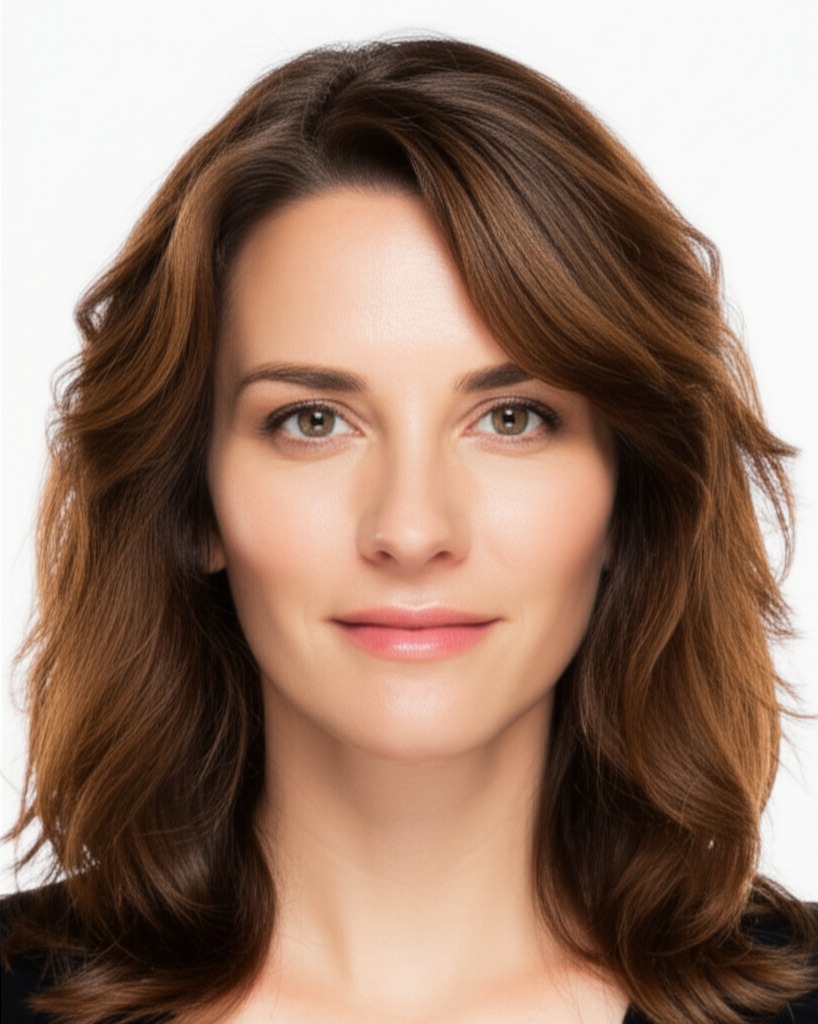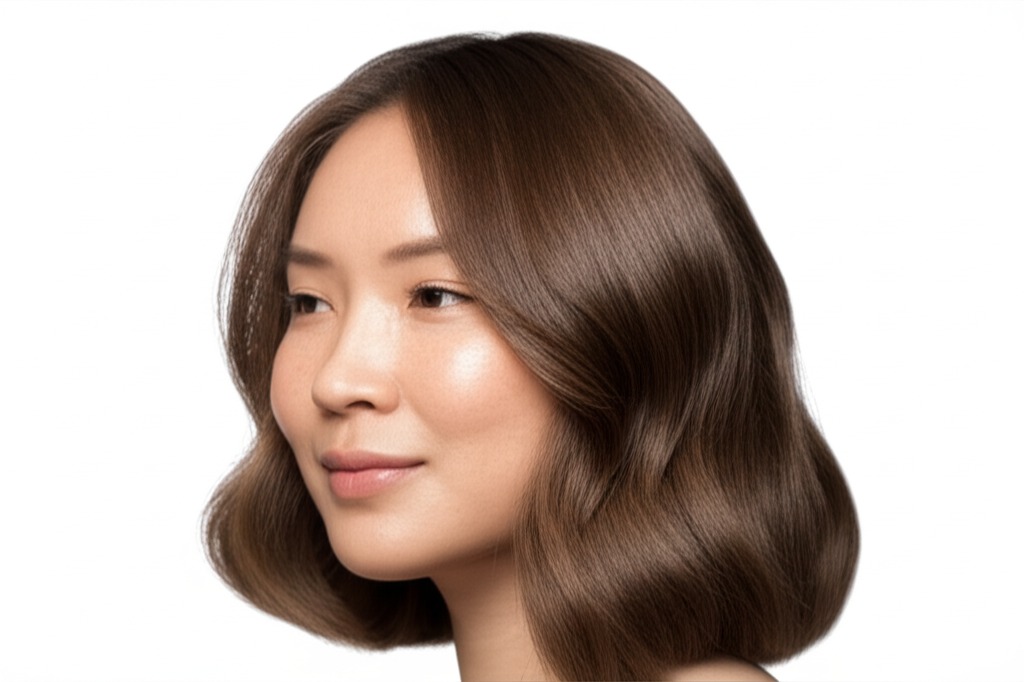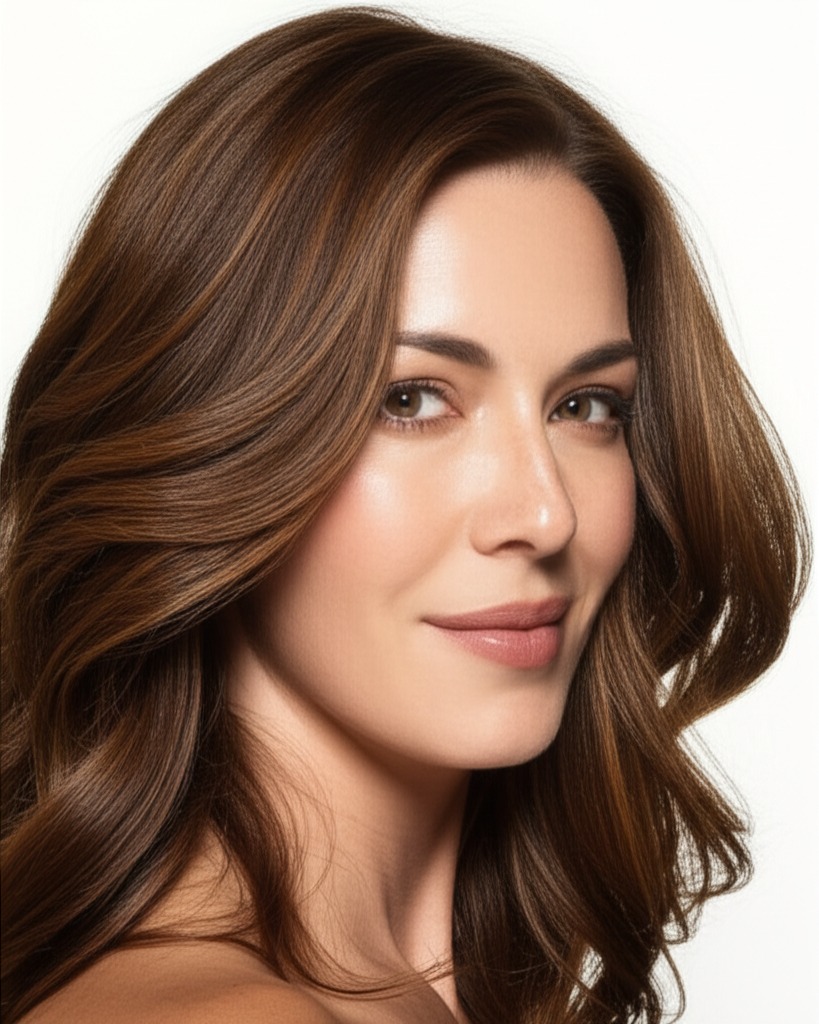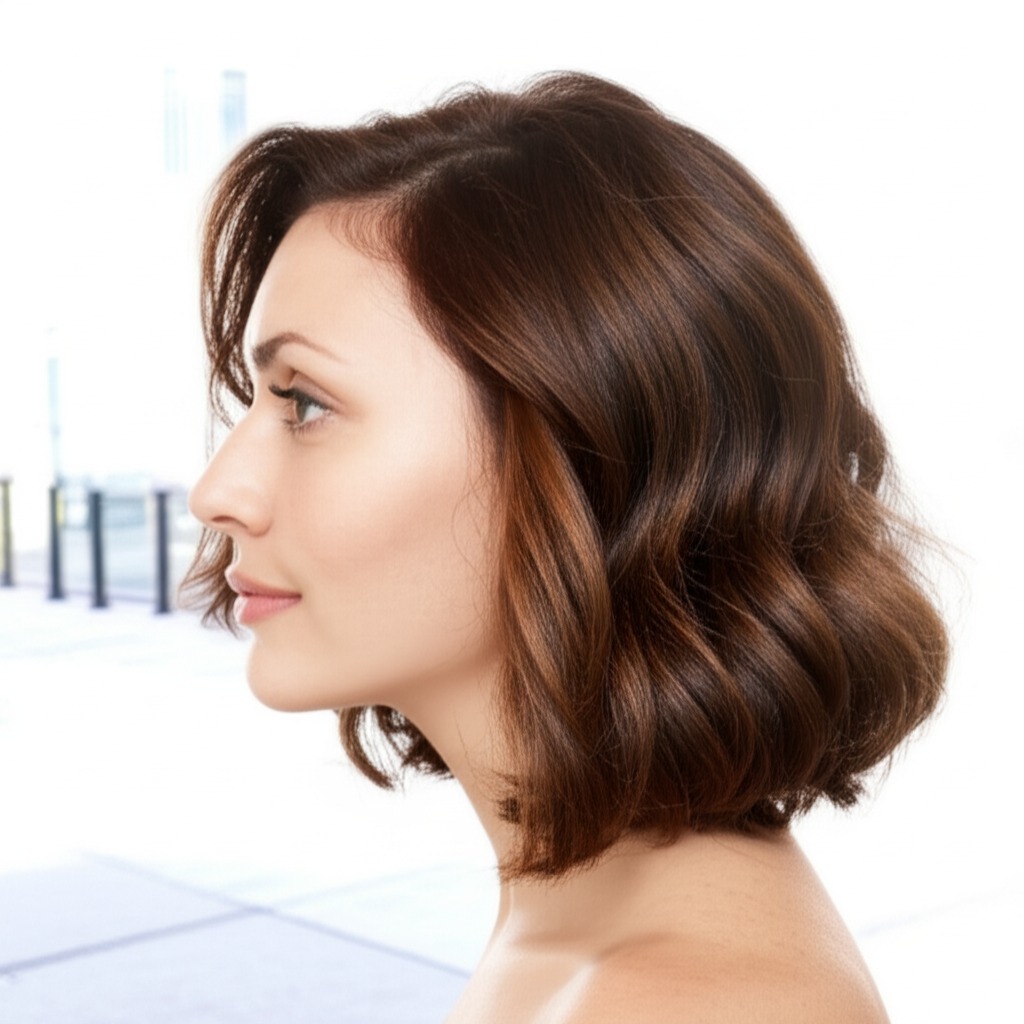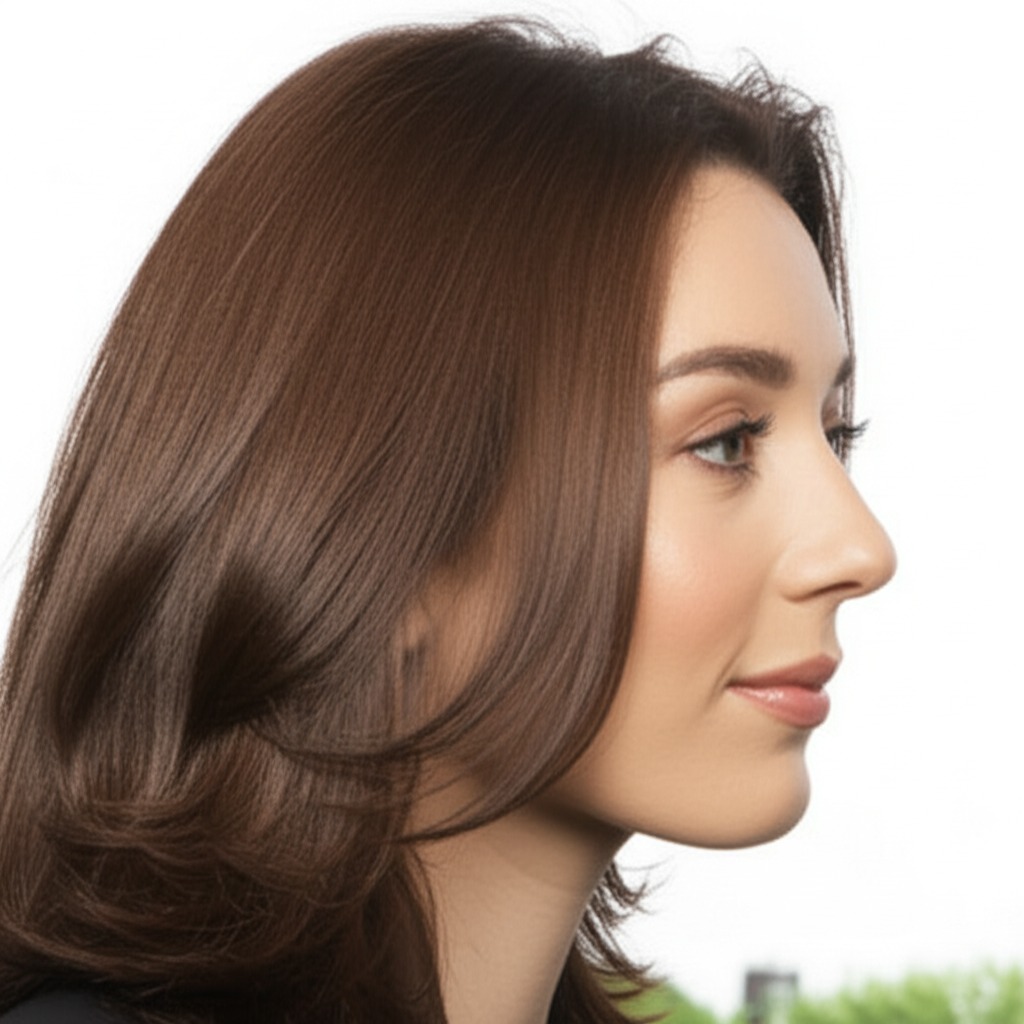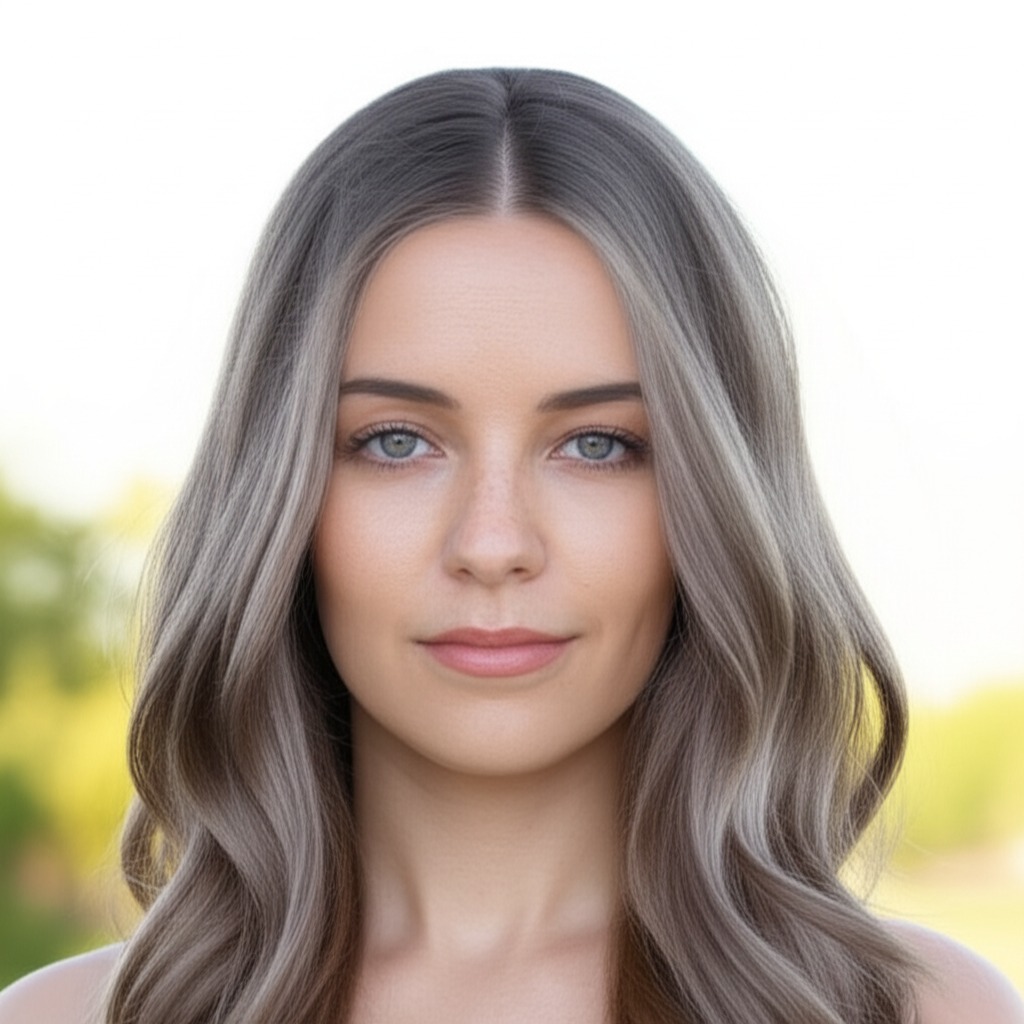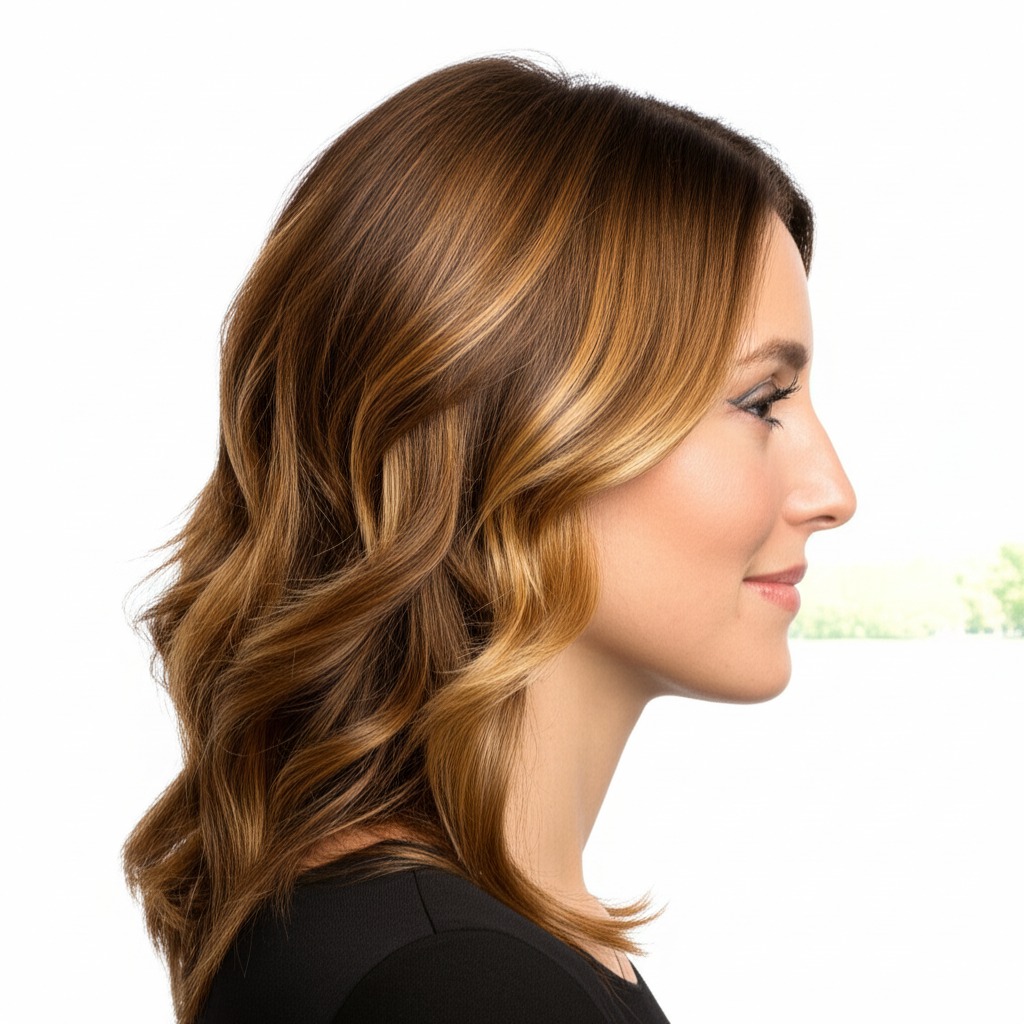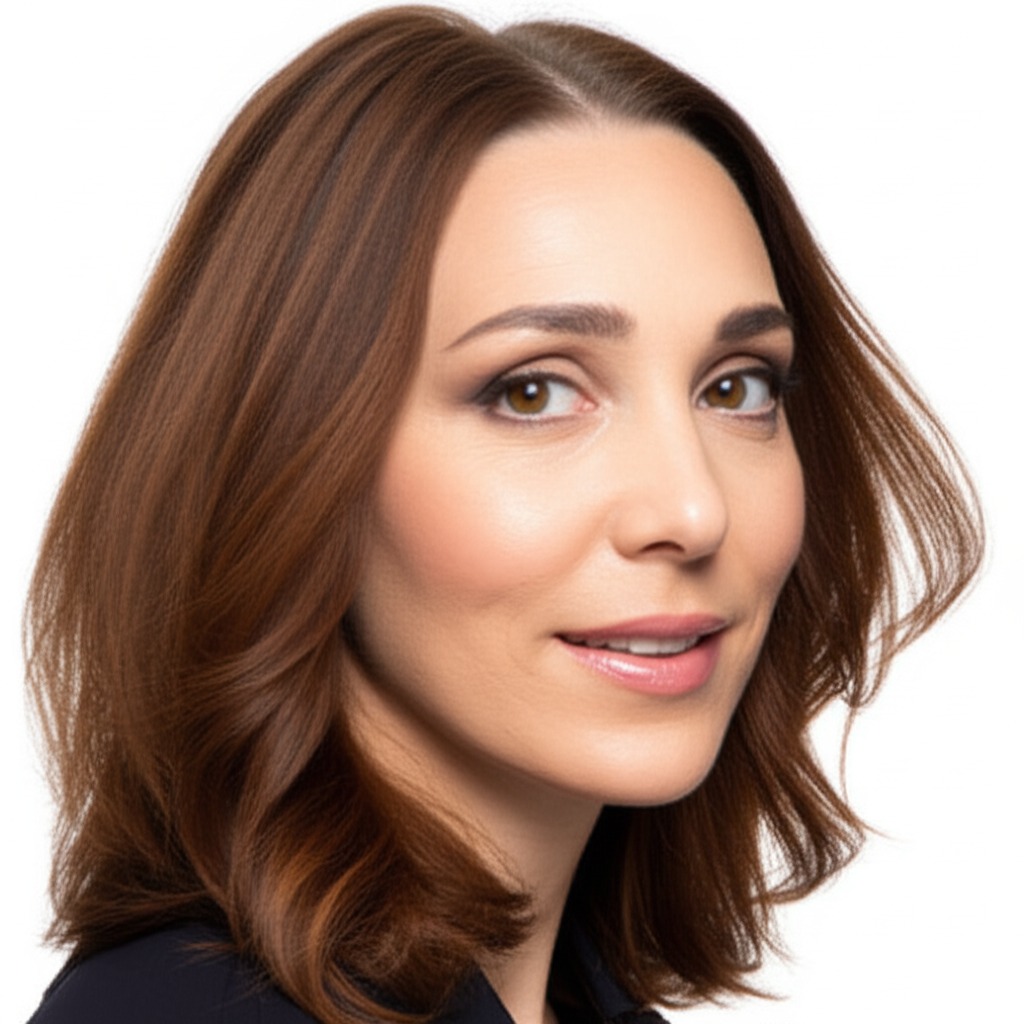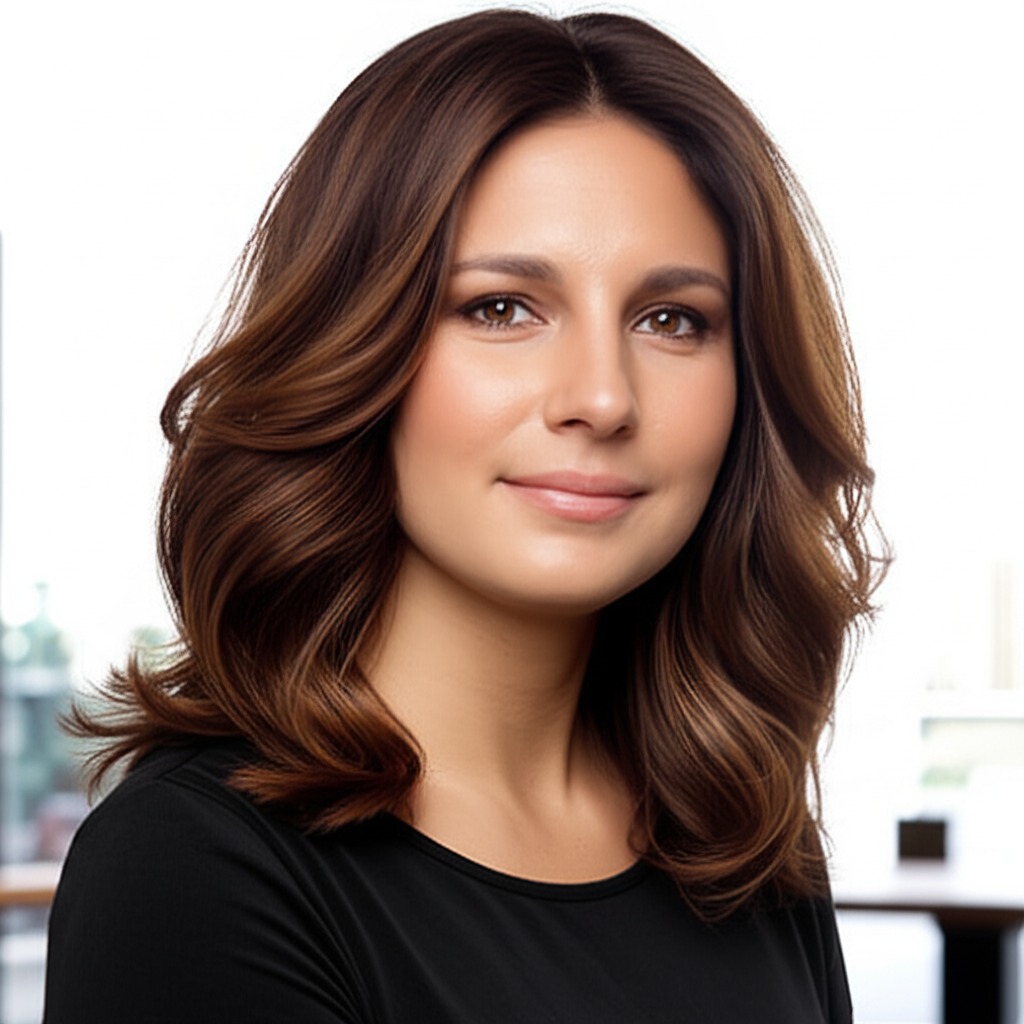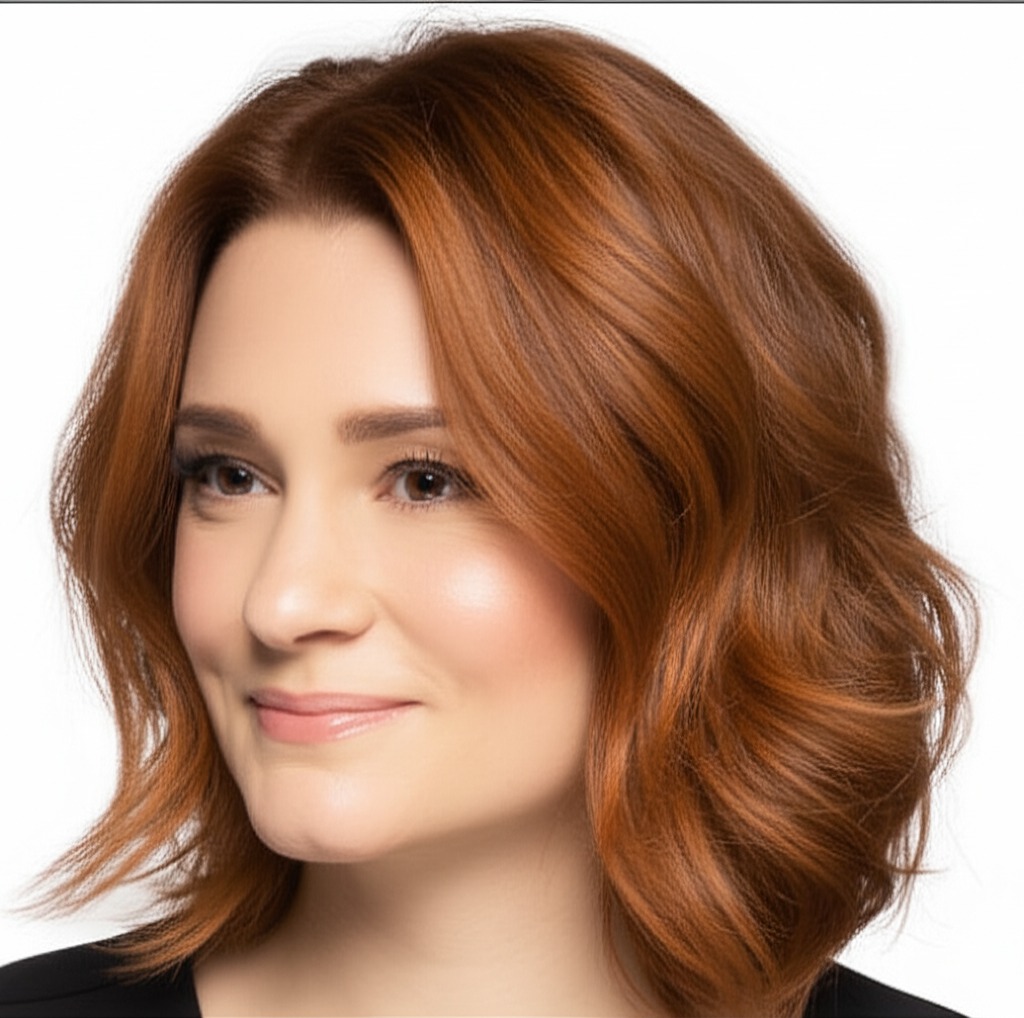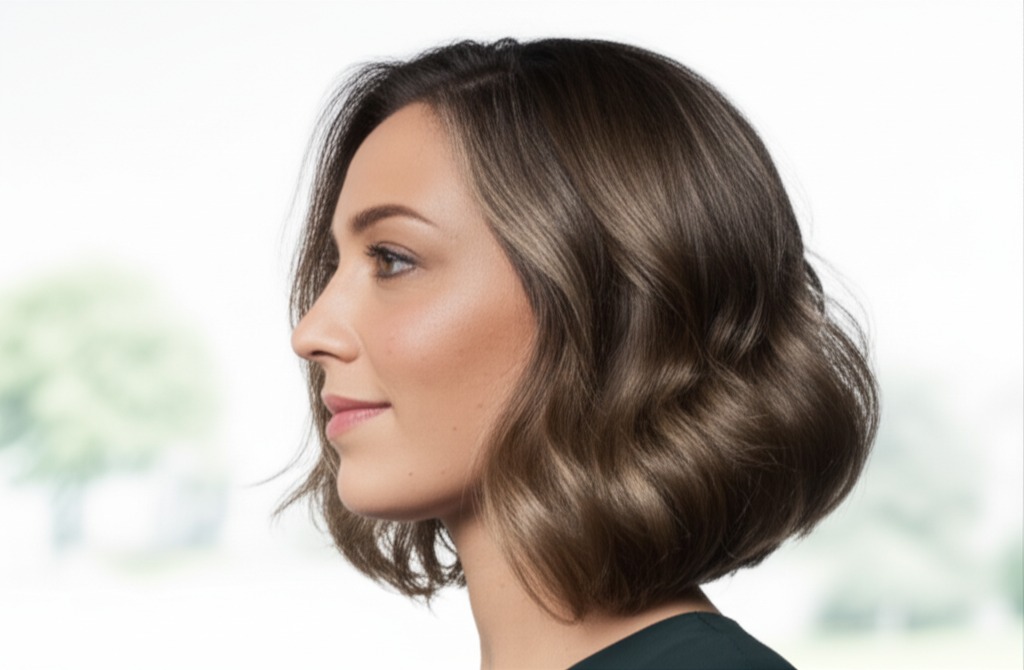#Walnut Brown Hair Color: A Guide to Richness & Warmth
Walnut brown is a universally flattering hair color that evokes feelings of warmth, sophistication, and natural beauty. It's not just “brown” – it’s a nuanced shade with incredible depth and versatility. This guide will break down everything you need to know about achieving and maintaining this gorgeous look, from understanding the nuances of the shade itself to ensuring your hair stays healthy and vibrant.
#1) Shade Definition: Understanding Walnut Brown
Walnut brown isn't one single color; it’s a family! It generally refers to medium-to-dark brown shades with warm undertones reminiscent of walnut shells – think rich, earthy tones rather than cool chocolate browns. Here’s the breakdown:
- Undertone: This is key. Walnut brown is almost always warm. The warmth comes from hints of red, copper, or gold within the brown base. A truly neutral walnut brown is rare and often leans slightly warm anyway.
- Depth (Levels): Hair color levels range from 1 (black) to 10 (lightest blonde). Walnut brown typically sits between levels 3-6.
- Level 3-4: Deeper, richer walnut – ideal for those wanting a more dramatic change or with naturally darker hair.
- Level 5-6: A softer, more approachable walnut - great for blending into natural color or adding subtle warmth to lighter bases.
- Variations: You'll see variations like "golden walnut," "chocolate walnut" (slightly deeper), and “honey walnut” (with more golden highlights).
#2) Who Does Walnut Brown Flatter?
The beauty of walnut brown is its adaptability, but certain features make it particularly stunning.
- Skin Tone & Undertone: It shines on people with warm to neutral skin tones. Think olive skin, tanned complexions, or those who easily pull off gold jewelry. If you have very cool (pink/blue undertones) skin, walnut brown can work but requires careful balancing – a slightly less warm version might be better.
- Eye Colors: Walnut brown complements almost every eye color!
- Brown eyes: Enhances their warmth and depth.
- Green eyes: Brings out the golden flecks in green eyes.
- Blue/Gray eyes: Creates a beautiful contrast, adding warmth to cooler-toned eyes.
- Natural Level Starting Points: Walnut brown is achievable from various starting points:
- Levels 1-3 (Dark Brown/Black): A subtle change – focus on tone correction and richness.
- Levels 4-6 (Medium Brown): Requires less processing; a closer match to the desired shade.
- Levels 7-9 (Light Brown/Dark Blonde): Requires more significant color deposit, potentially multiple sessions, and may need toning to counteract unwanted brassiness.
#3) Technique Options: Achieving Your Walnut Vision
How you apply walnut brown impacts the final result significantly.
- Single Process: A full, even application of color from root to tip. Best for covering grays or achieving a solid, uniform shade.
- Highlights/Lowlights: Adds dimension and depth. Caramel or copper highlights can enhance the warmth; lowlights (slightly darker brown) create contrast.
- Babylights: Very fine, subtle highlights that mimic natural sun-kissed strands. Creates a soft, blended effect.
- Gloss/Toner: Used after coloring to refine the tone and add shine. A warm gloss will intensify the walnut warmth; a neutral or slightly cool gloss can balance it if needed.
- Balayage-Effect vs Solid: Balayage (hand-painted highlights) creates a softer, more natural look with less harsh lines than traditional foil highlighting. A solid application provides even color coverage but lacks dimension. A blended balayage approach is often ideal for walnut brown – it allows for subtle warmth and movement.
#4) Maintenance & Longevity: Keeping Your Walnut Vibrant
Walnut brown requires commitment, but the results are worth it!
- Wash Frequency: Limit washing to 2-3 times per week to prevent color fading.
- Toner Refresh: Warm tones fade quickly. Plan for a toner refresh every 6-8 weeks (or sooner if you notice brassiness).
- Root Growth Pacing: Discuss with your stylist how frequently you want root touch-ups. A balayage or blended approach allows for longer periods between appointments, as the roots grow out more seamlessly.
- Budget/Time Planning: This color can range from moderately to highly involved:
- Single Process: Moderate cost and time (2-3 hours).
- Highlights/Balayage: Higher cost and time (3-5+ hours).
- Root Touch-ups only: Relatively quick and less expensive.
#5) Seasonality & Pairing with Cuts: Adapting Your Look
Walnut brown is adaptable to various styles and seasons.
- Common Cuts:
- Bob/Lob: The richness of walnut brown looks stunning on structured bobs and lobs, adding depth and movement.
- Long Layers: Enhances the natural flow and dimension of long hair.
- Pixie: Can be surprisingly flattering with a deeper walnut shade, especially when paired with face-framing pieces.
- Seasonal Tweaks:
- Fall/Winter: Lean into the richness – deepen the tone slightly for a cozy vibe.
- Spring/Summer: Add brighter caramel or honey highlights to reflect sunlight and create a lighter feel.
- Event/Occasion Picks:
- Work: A solid, rich walnut brown conveys professionalism.
- Daytime: Balayage with subtle golden tones keeps things bright and approachable.
- Evening: Add gloss for extra shine and richness—a touch of copper can create a glamorous effect.
- Weddings: Consider adding warm highlights to enhance your glow in photos.
#6) At-Home Care: Protecting Your Investment
Proper at-home care is crucial for maintaining color vibrancy and hair health.
- Sulfate-Free Shampoo & Conditioner: Sulfates strip away natural oils and fade color quickly.
- Clarifying Cadence: Use a clarifying shampoo (to remove buildup) sparingly – once every 4-6 weeks, or as needed based on product usage.
- Heat Protection: Always use a heat protectant spray before using styling tools.
- Color-Safe Styling Tips: Avoid harsh chemicals and excessive heat. Opt for air drying whenever possible.
- Product Checklist:
- Sulfate-free shampoo & conditioner
- Heat protectant spray
- Color-safe deep conditioning mask (weekly)
#7) Common Pitfalls: Prevention is Key
- Brassiness: Warm tones can oxidize and become brassy over time. Purple or blue toning shampoos/conditioners help neutralize this.
- Banding: Uneven color application, often due to improper technique or uneven hair porosity. A skilled stylist will assess your hair's condition beforehand.
- Patchiness: Can occur with at-home coloring if the product isn’t applied evenly. Professional application is recommended for best results.
#8) Pros & Cons: Weighing Your Options
Pros:
- Versatility: Works well with various cuts and styles.
- Universally Flattering: Suits a wide range of skin tones and eye colors.
- Natural-Looking: Can be achieved with subtle techniques like balayage.
Cons:
- Maintenance Burden: Requires regular toning and root touch-ups.
- Fade Risk: Warm tones fade faster than cooler tones.
- Potential for Brassiness: Requires proactive measures to prevent.
#9) Salon Consultation Script: Setting Expectations
Before your appointment, prepare with these questions/points:
- "I'm interested in a walnut brown hair color. Can you assess my current level and undertone?"
- “What technique would be best for me – single process, balayage, or highlights?”
- "How can we minimize brassiness and maintain the warmth I desire?"
- "What’s your recommended maintenance schedule (toning, root touch-ups)?"
- "Can you show me photos of different walnut brown shades to help me visualize the final result?"
- “I want a natural look. Can we discuss how to avoid harsh lines or obvious color transitions?”
#10) FAQs: Your Walnut Brown Questions Answered
- Can I achieve walnut brown on my own? While possible, professional application is highly recommended for even results and minimizing damage.
- How long will it take to get walnut brown if I’m starting with dark hair? A single process might be quick (around 3 hours), but lightening darker hair requires multiple sessions over time.
- Will walnut brown make my face look older? Not necessarily! The warmth can actually soften features and add radiance, especially when applied strategically with highlights or balayage.
- What if I accidentally get brassy tones? Use a purple shampoo/conditioner 1-2 times per week to neutralize the brassiness. Don’t overuse it, as it can create unwanted cool tones!
- Can I go lighter from walnut brown later on? Yes, but it will require more processing and potentially damage your hair. Gradual lightening is always best.
- Is walnut brown damaging to my hair? Any color process involves some level of lift, which can slightly impact the cuticle layer. Proper care (sulfate-free products, heat protection) helps minimize any potential damage.
This comprehensive guide provides a solid foundation for understanding and achieving beautiful walnut brown hair! Remember that consulting with a skilled stylist is always best to tailor the shade and technique to your individual needs and preferences.
